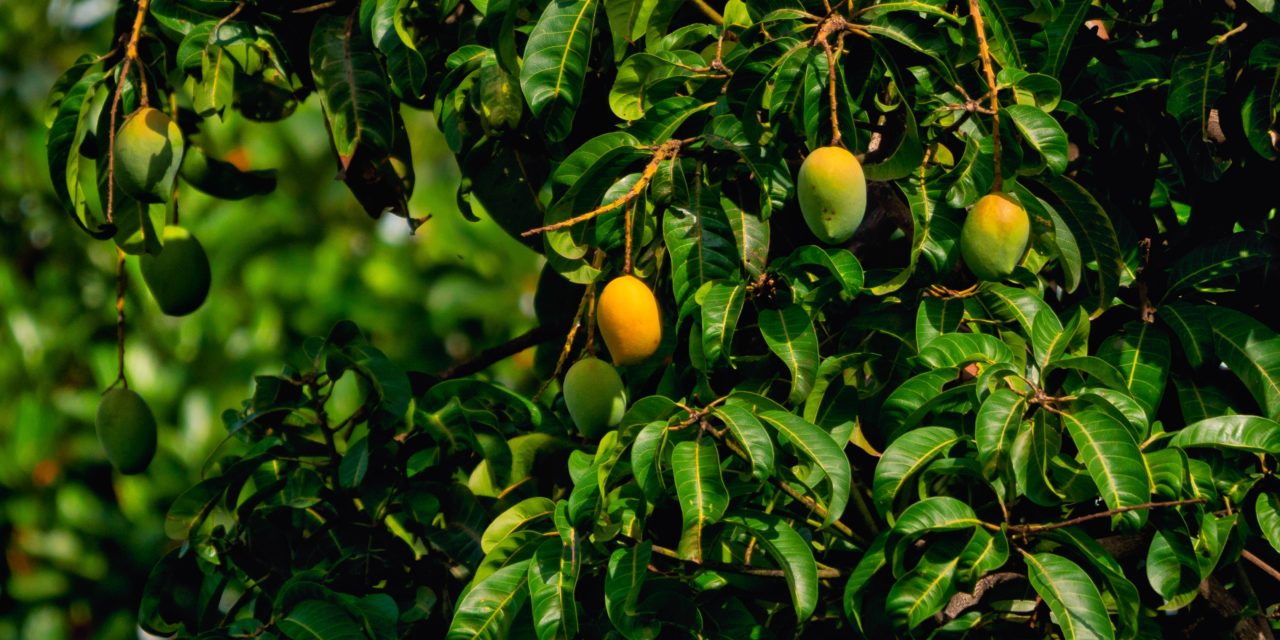If you have never tasted a mango, you are depriving your taste buds of a delectable natural treat. Although they are not native to the United States, mangoes are grown in a few US states, primarily in South Florida.
In Florida, mango season lasts from May to October, with the hottest summer months producing the ripest harvestable fruit. Mangoes can be grown during the off-season in Florida, but they may be less sweet and more stringent than those grown at the proper time.
Mangoes are tropical fruit, so they require hotter temperatures and milder winters than most states in North America can provide. Even certain areas in Florida are not ideal for mango trees to flourish. Keep reading to learn about the requirements of mango trees, and where the optimal areas are in Florida in which to grow them.
Growing Mangoes Commercially in Florida
Mango trees are native to India and were brought to the United States in the 1800s. Therefore, they thrive in hot environments and do not cope well with cold weather.
In fact, temperatures below 30° F can kill a mango tree. There are several counties in South Florida in which the weather is perfect for growing crops of mangoes:
- Dade County (Southeast Florida including Southern Glades and Miami)
- Lee County (Southwest Florida including Cape Coral and Fort Myers)
- Palm Beach County (Southeast Florida north of Dade County, including Boca Raton and West Palm Beach)
With abundant sunshine and warm temperatures, mangoes love the weather in south Florida. Who can blame them? The tropical climate is as great for fruit as it is for vacations.
Growing Mangoes in Other Parts of Florida
Luckily for those who do not live in south Florida, it is possible to grow a mango tree in other areas of Florida and even other states.
With some care, planning, and upkeep, you can have your own mango tree wherever you are. Here are some guidelines for growing successfully in a pot or planter:
- Choose a dark-colored pot, which absorbs more heat
- Use soil that provides excellent drainage with a good amount of organic matter and a pH between 5.5 and 7.5
- Choose a dwarf variety that will stay small enough to move around relatively easily
- Bring the mango tree inside when the temperatures drop
- Since mangoes flower in colder months, after it is brought inside, the tree would need to be hand pollinated in order to produce fruit
- Make sure that the tree is in a position where it will get receive at least 8 hours of full sun exposure
Although some work is involved with owning a potted mango tree, the resulting beautiful evergreen leaves and delicious fruit would be an excellent reward for your labor.
Not to mention that you could be the envy of everyone at your apartment complex with a mango tree on your balcony.
Growing Mangoes Out of Season
Naturally, mango trees grow, flower, and bear fruit at certain times of the year, depending on the variety.
But with the controlled environment of a greenhouse, the fruit-bearing time period can be extended or altered.
There are many factors that can be controlled in a greenhouse to produce fruit off-season:
- Wind speed
- Moisture
- Temperature
- Light
- Soil condition
- Minerals/fertilizer
- Atmosphere
- Pollination
Greenhouses can be expensive and time-consuming to build and maintain and can require a significant amount of space, so it is not feasible for everyone to be able to grow mangoes out of season.
It is interesting, nevertheless, that the technology exists to be able to grow fruit trees indoors at any time of the year.
Mangoes at the Market
Typically, most grocery stores carry mangoes, especially during peak season. However, most of the mangoes sold in grocery stores come from outside of the United States.
It is difficult for American farmers to compete with the pricing of internationally grown fruit, but there are reasons why Florida mangoes are more expensive:
- The quality of Florida mangoes is much higher than those outsourced from other countries
- Farmers in the USA who grow mangoes on a smaller scale are paid more than their counterparts overseas
- Imported mangoes are typically sprayed with pesticides
The next time you are in a grocery store, if Florida-grown mangoes are available instead of fruit imported from other countries, it is worth it to spend a little extra for the best quality product.
Not only does your purchase support farmers and small businesses in the United States, but it is also better for your health and the environment.
Final Thoughts
Whether you eat mango raw or use it in countless drinks, appetizers, or main course recipes, it is easy to see why it is called the “King of Fruits”.
Those in south Florida are indeed lucky to be able to grow them naturally, but it is possible for anyone to grow and enjoy one of these incredible trees and their scrumptious fruit with some dedication, knowledge, and a little bit of elbow grease.





